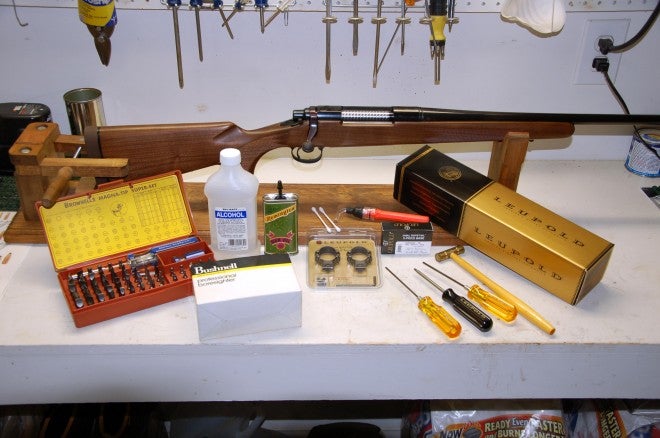The Case for Quality Scope Mounts and Rings
Dr. John Woods 06.04.14

Regardless of the money you just spent on that new scope for your deer rifle, its quality doesn’t matter much if it is not mounted properly in suitable rings. Now is not the time to go cheap. You bought a good rifle and a good optical scope, so also buy some high quality rings and mounts to set the rig up right.
All scope rings are not created equal, and neither are receiver mounts. Some name brand scope makers also manufacture rings and mounts for their scopes. It is a reasonable expectation that for example if you have a Leupold scope that Leupold’s own mounting system is the best available. Of course, those mounts also fit all kinds of other scope mounting applications.
In fact, for regular bolt action type hunting rifles, I only use two brands of mounting systems. One is Leupold, and the other is the DNZ Reaper one-piece milled mount and rings. For AR rifles I recommend GG&G quick release or bolt-on rail mounts, but those are just my preferences.
Generally I prefer steel to aluminum, being old school, but even I have to admit that there are alloys out there now that can hold up to anything. Cost and reputation count big. A $19 set of rings may not be too high quality, so buy a good brand. The same is true for the mounts.
Buy rings and mounts of the same brand so there is some degree of match. The rings have to fit precisely into or onto the mounts. Mounts usually come in one piece or two-piece versions. Both are reliable scope bedding systems, just make certain a one-piece mount does not interfere with cartridge ejection. This should not be an issue with a high quality system.
Basic rings of course come in 1-inch or 30mm. It is obvious to match the scope tube size to the ring size. Some 30mm rings also include a set of Delrin ® inserts to size these rings down to fit a one-inch scope. I tend to stay away from these inserts, because a scope can slip inside of them, but they generally do work fine.
There are also all kinds of specialty rings and mounts for special applications. Some are extension mounts that allow extra forward positioning of the scope. Some rifles like Ruger have integral rings that fit right on the rifle’s receiver. The new Thompson-Center Icon rifles also have a milled Picatinny type ring mount engineered into the rifle’s action. Just make sure whatever mount and rings you buy, that they were made for your specific rifle action.
A lot of things can be screwed up when mounting a scope. It isn’t rocket science, but it does have to be done right. This is what I do. First I get out the right tools and screwdrivers that fit the screws, hex heads, or Torx type screws.
Next, I degrease the mounting holes on the rifle with a cotton tip dipped in alcohol or gun solvent. Likewise I wipe down the mounts, rings, and all mounting screws, then let them dry.
I run the mount screws into the rifle mounting holes before putting on the mount. With each screw a dab of gunsmith locking glue is a good idea. Turn the screws down tight for each mount. Alternate between screws when tightening them down. Don’t overdo it. The worst thing that can happen is breaking off a screw in the rifle mounting hole.
For the rings, I like to run some 400 grit sandpaper inside the rings to clean off the bluing or stainless finish. Mount the rings according to the manufacturer’s instructions. Make certain the rings are mounted or turned square to the receiver so they won’t bind on the scope. Then take the top half of the rings off to complete the job.
Once the mounts are set and the ring bottoms are on, set the scope down into the lower half of the rings, put on the top part of the rings and turn all the screws down loosely. At this time you must adjust the eye relief or the distance from the eyepiece to your shooting eye when the rifle is mounted to the shoulder. You also have to square up the crosshairs so that they are not tilted. There are tools and fixtures available to assist with these tasks.
When these adjustments are set, begin to tighten down the scope ring screws. Go slowly alternating between the screws, but do not over tighten. Check to make certain the crosshairs are square to the rifle’s action and bore. You should be ready for bore sighting and some shooting at the range to zero it in precisely.